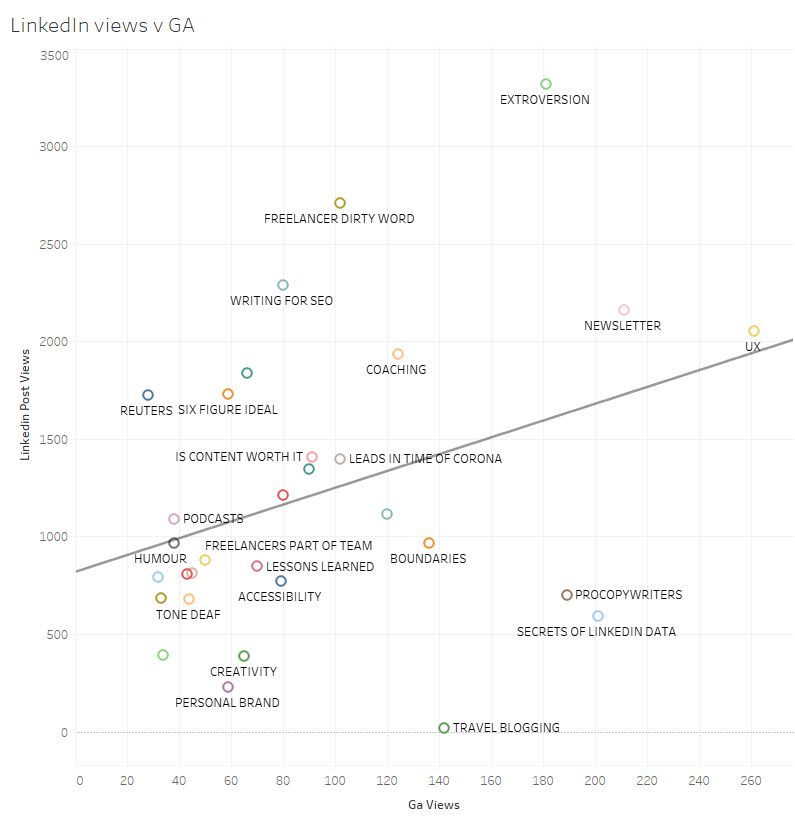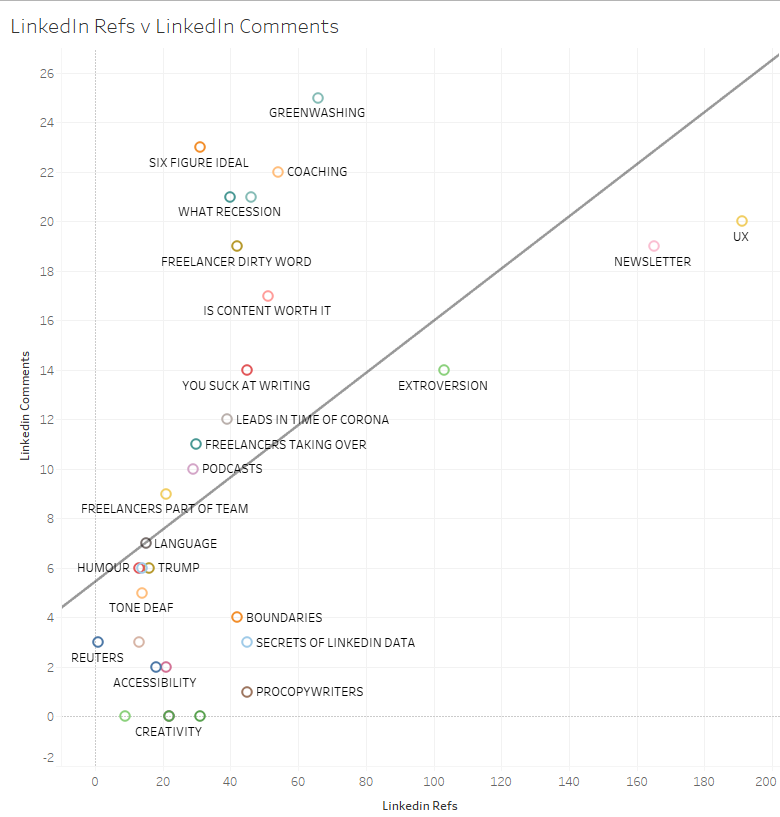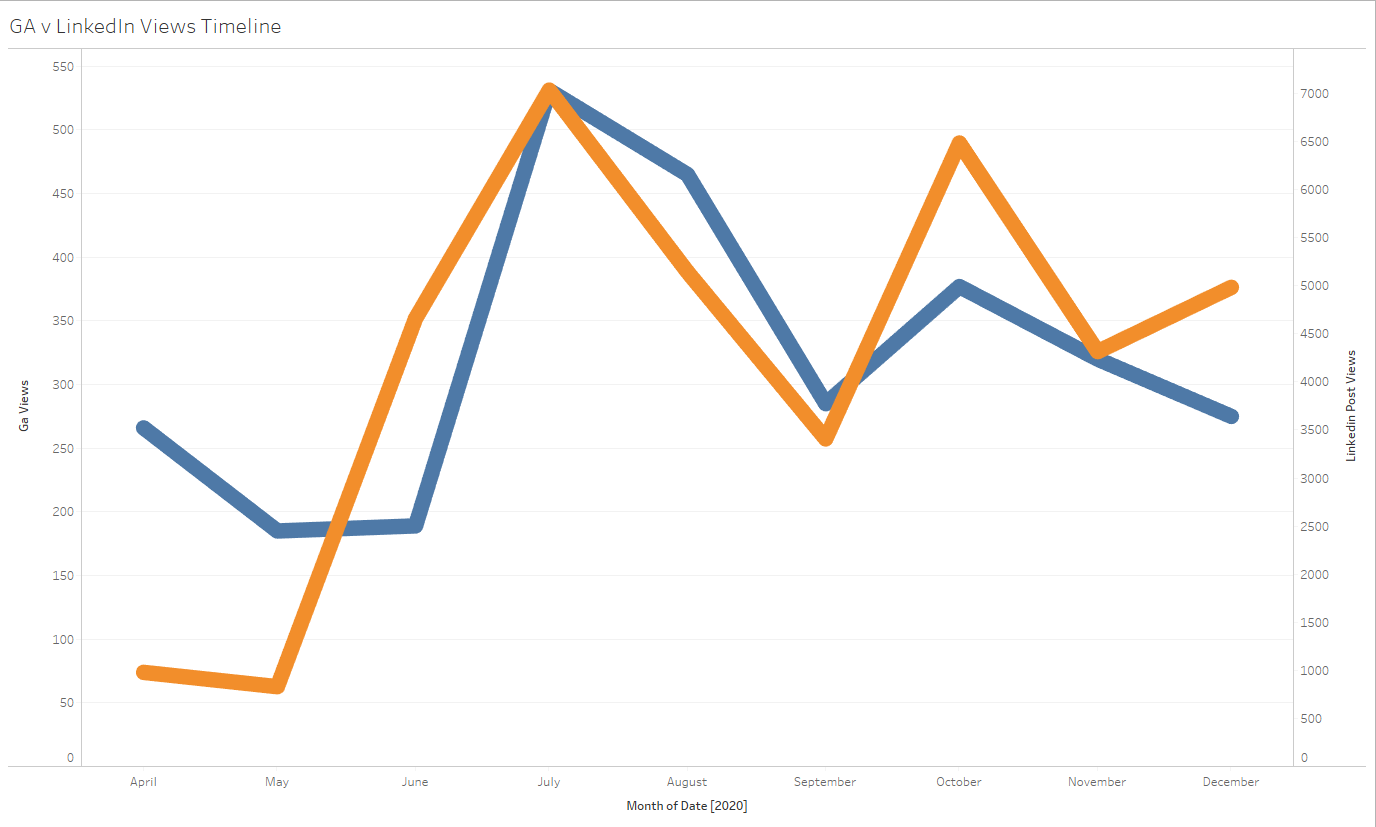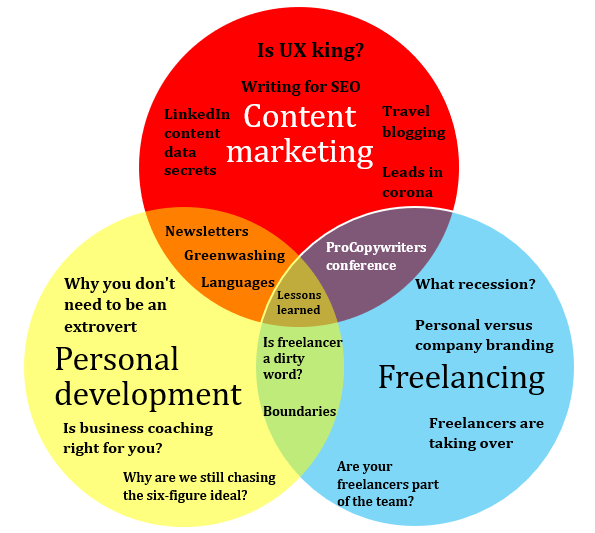The Takeaways from One Year of #Write52
There we have it – somehow, in what has been the longest and shortest year of our lives, 2020 is over. We’ve all learnt a lot this year and have embarked on our own projects. Here’s hoping you can gain something from this personal endeavour: #Write52.
What is #Write52?
If you’re not familiar with it, #Write52 is a concept dreamt up by Ed Callow. The premise is simple:
- Produce one piece of content per week for 52 weeks
- Share on social channels with the hashtag #Write52
- See it featured in the weekly newsletter, collating posts from all contributors.
It’s also an exercise in discipline. The cobbler’s children certainly go barefoot in the writing trade: while we’re beavering away writing content for other people, we often forget to nurture our own.
Committing to one post per week is a challenge for time management and creativity – but the rewards speak for themselves. If you want to try it in 2021, please give me a shout. In the meantime, here are a few takeaways from writing 52 blog posts in one year. Strap in.
What a year.
That’s the understatement of the century, but with 366 days stuck behind a screen, there has been plenty of inspiration. Fifty-two blog posts have covered themes such as freelancing, personal development, content marketing…even Ricky Gervais and Donald Trump.
So, what have we learnt? Drawing on data from Google Analytics (GA), social media and lead generation, I’ve reached a few conclusions.
A few caveats: how we collected the data
(Did I mention that Katie Lingo now offers a data visualisation service? His name is Craig and he’s rather good.)
To reach the ‘top 10’ posts of the year, we started by looking at page views in GA, which revealed the most popular to be:
- Move over, content: is user experience now king?
- Did you start a newsletter in lockdown?
- #HashtagWinning: the secrets of LinkedIn content data
- How to make the most of the ProCopywriters Conference
- PSA: you don’t need to be an extrovert to succeed
- Is COVID-19 the end of travel blogging?
- 2020: the year that personal boundaries forgot
- Is business coaching right for you?
- Forget greenwash hogwash: why sustainable copywriting matters
- Is ‘freelancer’ a dirty word?
But…and this is a big but. Kardashian-sized. Page views aren’t the be-all and end-all, are they? What about engagement – likes, comments and shares? What about the acquisition source?
The golden formula
Using the top 10 by page view as a benchmark, we created a weighting system. We have ignored nominal Facebook and Instagram data, and should also consider general social media growth over the year.
Based on personal preference, the weighting system looks a little like this:
Value of metrics as a percentage
- Page views = 20%
- Shares on LinkedIn = 20%
- LinkedIn post views = 15%
- Referrals (website clicks) from LinkedIn = 15%
- Likes on LinkedIn = 10%
- LinkedIn comments = 15%
- Referrals from Twitter = 5%
You might feel this is a little biased in favour of LinkedIn. It’s based on Katie Lingo being a B2B service, and previous lead generation methods. Twitter overshadows Facebook and Instagram because my following is much larger, and it’s also where you’ll most likely find the #Write52 hashtag.
The real top 10
Here’s where it gets interesting. Using these percentages, we gave each article a number of points between 1 and its relative value (e.g., page views = between 1 and 20). The results are illustrated below:
Let’s look at the outliers.
Is freelancer a dirty word? jumps from 10th place to a very respectable third. Meanwhile, #HashtagWinning: the secrets of LinkedIn content data falls to eighth place, while my analysis of travel blogging drops to 10th place.
- LinkedIn post views are very influential.
The new third place came from LinkedIn post views – IFADW scored second place for these, despite coming last for website clicks. This suggests that the right kind of LinkedIn post will have considerable reach, whether that’s down to timing, wording, or just a controversial viewpoint. More on that below.
- Twitter users love a good data deep-dive.
The secrets of LinkedIn content data performed extremely well for website views – but this was mostly from Twitter referrals. When we group posts by Twitter referrals (see the larger data set below), we see a recurring theme of data-led content making a splash. A post on lead generation in the pandemic, for example, was also a hit.
- We shouldn’t ignore other metrics.
This insight into the demise of travel blogging was a huge anomaly. It was written earlier on in the year and shared as both a LinkedIn Pulse article and separate blog post, which explains its lack of LinkedIn referrals. But despite referencing multiple bloggers on Twitter, it had few clicks from that platform.
The reason it scored so highly was for page views – a third of which came from ‘Google organic’. Turns out, ‘travel blogger UK’ pushed up the views. Yay for SEO!
Expanding the data set
It would be unfair on the other 42 posts to restrict our analyses to just 10. So I opened up the field, and once again, the figures did a merry jig. The clear winners remained – that post on user experience, for instance – but they did pose some new questions.
Clickbait titles might do the trick…
Yeah, I threw up in my mouth a little bit too. But if we look at this chart outlining page views versus LinkedIn views, there’s a lot to be said for having a bit of a controversial title.
 Note the article titles that attracted muchos views, but didn’t necessarily lead to click-throughs. A part of me dies inside when I consider that people may be commenting without reading, but it does give us an idea of what stirs debate.
Note the article titles that attracted muchos views, but didn’t necessarily lead to click-throughs. A part of me dies inside when I consider that people may be commenting without reading, but it does give us an idea of what stirs debate.
“Is freelancer a dirty word?”
“Writing for SEO or writing for humans? The constant battle.”
“This is why you suck at writing.”
“Why are we still chasing the six-figure ideal?”
Ask a question or make a controversial standpoint – for example, writing for keywords is demoralising bullshit – and you’ll get bigger reach. There’s a more heartening graph below: those who commented on LinkedIn versus those who actually clicked through. Phew.
 It’s a date
It’s a date
You probably heard the collective groan earlier this year as the alleged ‘LinkedIn algorithm change’ royally shagged everybody’s reach. It’s hard to pinpoint exactly when it happened – this article from the beginning of Q4 had looked at the previous three months, so we can assume it was sometime around summer.
Take a look at this nosedive in page views at that time. The blue line is LinkedIn – in isolation, we could pin this on algorithm changes. But the orange line is Twitter, which is even more extreme, showing a dramatic rise in October.
 Could it be that outside events have more of an impact than we thought? It was summer; it was hot and we were enjoying Eat Out to Help Out. There’s also the possibility that my content was just shite. Let’s skim over that…
Could it be that outside events have more of an impact than we thought? It was summer; it was hot and we were enjoying Eat Out to Help Out. There’s also the possibility that my content was just shite. Let’s skim over that…
General growth
One benefit of #Write52 is that it has proved instrumental for increasing social media following. If we consider that my Twitter presence has grown by 200 per cent this year, it follows that Twitter referrals should increase. Or it could be the other way around. More content = more followers.
 Either way, the pattern is reflected on LinkedIn too. Back in April, posts were averaging around 300 views, whereas in October they peaked at more than 3,000. Brand awareness is notoriously difficult to value, but there’s no denying the snowball effect of consistent content.
Either way, the pattern is reflected on LinkedIn too. Back in April, posts were averaging around 300 views, whereas in October they peaked at more than 3,000. Brand awareness is notoriously difficult to value, but there’s no denying the snowball effect of consistent content.
You can also see how brand awareness becomes revenue in this post.
What themes pique readers’ interest?
As a content marketer, I’m naturally going to explore some themes more than others. Based on general engagement data, the subjects that struck the biggest chords were:
- Content marketing
- Freelancing
- Personal development.
 That last one is particularly noteworthy because it essentially speaks to everyone.
That last one is particularly noteworthy because it essentially speaks to everyone.
The idea that we should be focusing on being ‘rich in other ways’ generated the second-highest number of LinkedIn comments. Similarly, a debate on business coaching came in third place – while a deeper analysis of introversion was a huge hit.
Micro and macro-targeting
There’s something to be said, then, for both micro-targeting and casting your net wide. In both cases, these posts have garnered more reach due to their involvement with others. A post on sustainable copywriting scored highest for comments because I’d interviewed so many people.
But this is a pandemic, and we’re all in the same boat, right? Never has there been a time more poignant to explore more general, personal themes. We can all relate to feeling introverted while we’re locked up indoors. The takeaway? Move with the times.
Just for fun – a few absolute turkeys
#Write52 has doubtless been an exercise in trial and error, not just with content themes but with distribution and such. For example, I learned early on that posting to a LinkedIn business page would dramatically decrease reach.
But for whatever reason, be they lacklustre topics or lost in a sea of breaking news headlines, these posts didn’t ignite.
Well then, there’s an argument for long-form articles. It seems learning how to cut copy isn’t for everyone, and this brief 800-worder scored a paltry 7/100 on our weighting scale!
Perhaps the timing was wrong – maybe we were too caught up in the Four Seasons Landscaping debacle to notice. It would be interesting to see how this one fared had it been published a little later – but for now, it scored just 11. Ouch.
Talk about irony. It looks as though nobody wants to read about being ‘tone deaf’ during a pandemic – perhaps the whole article needed some more self-awareness. It scored 14/100. If we don’t fuck up, kids, we don’t learn.
The key takeaways
TL;DR – if you’re going to try #Write52 this year, please heed this advice from one very tired writer:
- The value of your content is entirely your decision. Maybe Twitter views mean more to you than LinkedIn. You can’t measure your own content by anybody else’s standards, so look at your historical data to measure future results.
- Brand awareness should not be overlooked. So, it’s not quite a case of simple numbers. It’s no less valuable – it’s a truth self-evident that the ‘lurkers’ on LinkedIn are the ones who will convert.
- Look for other metrics when you have anomalies. Twitter users love data. Who knew? If you’re bogged down in top-level stats, don’t forget that other factors might influence results.
- There’s nothing like a controversial title to crank up the hits. Questions put the onus on the reader to think, respond…and read!
- Don’t feel bad if seasonality gets you. Timing is everything, especially in a pandemic. Sometimes, it’s best to wait until after the latest crisis has blown over.
- Targeted themes work, but a broader approach can have a deeper impact. By all means, tag people when dealing with an industry-specific topic. But remember that empathetic, ‘authentic’ posts also have their place.
- Learn from your mistakes. Some posts will set off the tumbleweed. Shake it off. It will only guide you for your next piece – or your next hit.
For 2021, it’s all about the 26
If you’ve made it to the end of this behemoth, I tip my hat to you. But then, you made it to 2021, so you deserve a fecking medal.
I could not be more grateful for the opportunities #Write52 has given me this year – and the people I’ve met through it. There’s been a lot of work, creativity and late nights, but it’s all been worth it.
Will I do it next year? Possibly. I might try a #Write26 approach instead. That way I’ll have two solid weeks to really plan and research my content. Plus, it’s got a 26 in it, and Lord knows she loves a marathon.
All the best for 2021 folks, and thanks for following me on my #Write52 journey.



31st December 2020